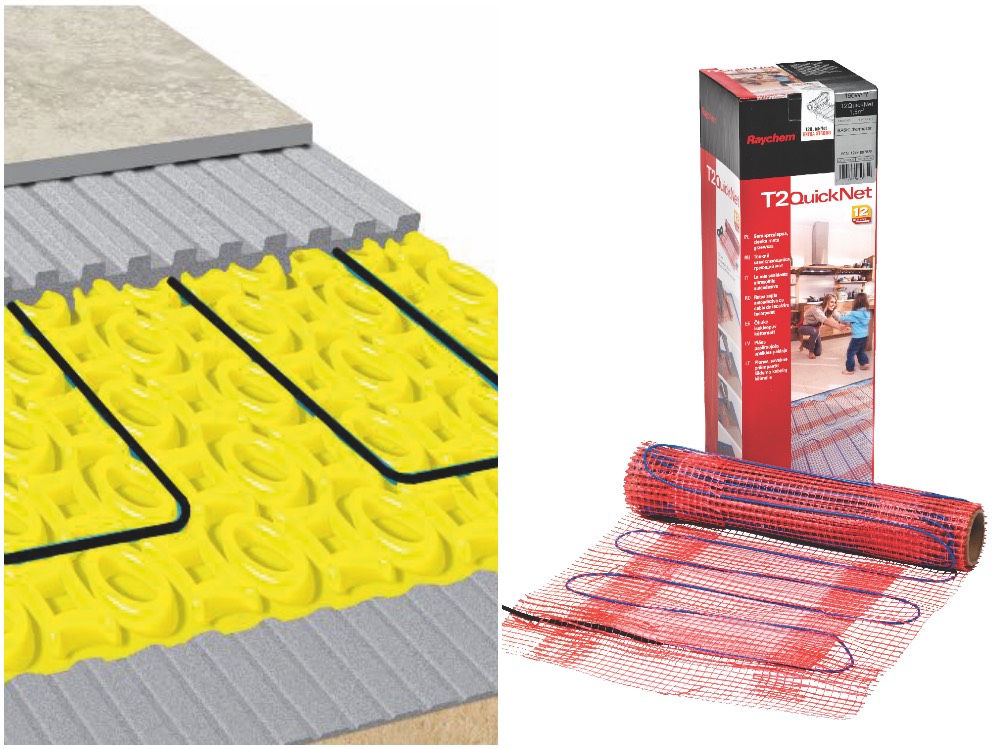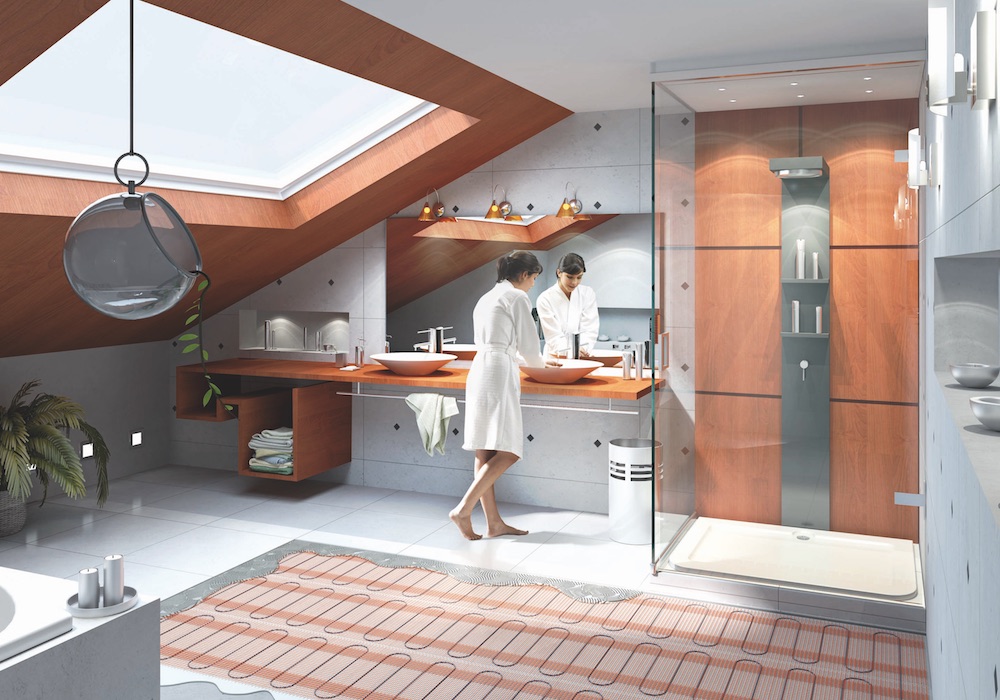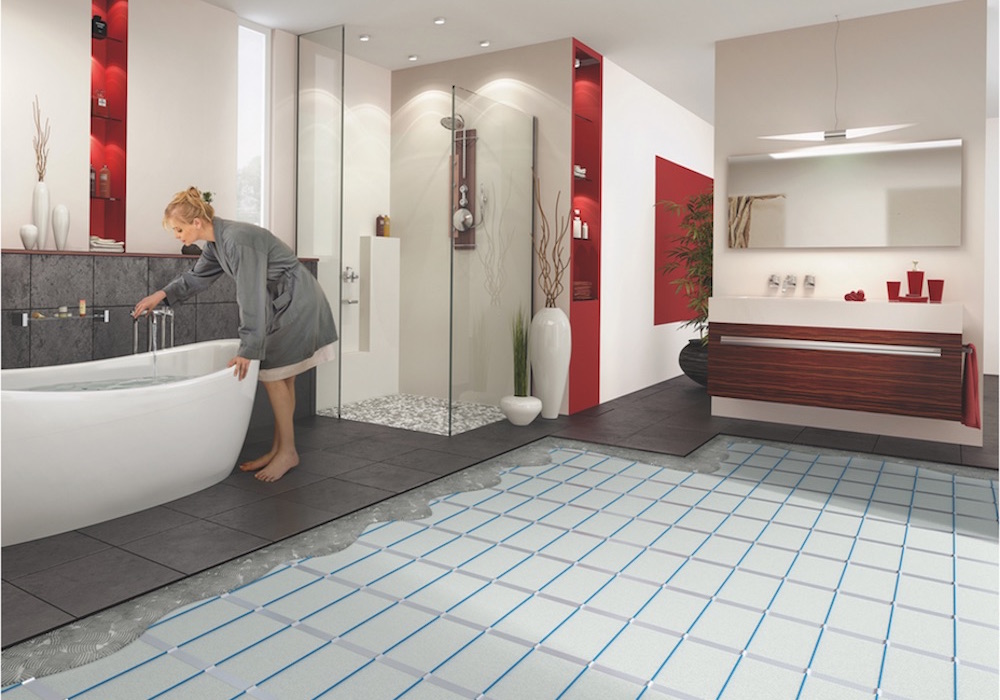Different Types of Underfloor Heating
From bathrooms and kitchens to conservatories and even bedrooms, underfloor heating is a wonderful luxury that will really make your house feel like a home. The warmth underfoot is something that can change how you feel when you step into a room instantly. For those who have opted for it, you will often find that they’ll never go back! If you’re currently renovating or in the planning stages of renovating a floor, it’s definitely worthwhile considering.
Kitchens and bathrooms are some of the most popular rooms for underfloor heating as they are often tiled. A cold tiled surface, especially when the room is at the end of your home, can be really unpleasant. Who hasn’t experienced stepping foot onto a cold tile in the middle of the night or on a winter’s morning? Imagine how nice it is to not have to experience that cold shudder!
Here at CTD Tiles, we offer different types of underfloor heating. Each have different pros and cons, so we’re going to take you through them to try and answer any questions you might have!

First make sure your floor tiles are compatible with underfloor heating
When choosing your floor tiles you will of course have to make sure that the material and tile you are working with is compatible with underfloor heating. Most types of flooring today are made to be compatible, but you must make sure you or your builder check this prior to committing to your tiles and your underfloor heating.
Different types of underfloor heating
At CTD we offer a self-adhesive mat system and a loose wire system. Both are good options but just have a slight difference in installation and performance. Let’s take a closer look at their different pros and cons:
Self-Adhesive Mat System
Pros:
- It is comfortable underfoot, as it creates an even layer under the tile
- It is straight forward and easy to install
- It is energy efficient
- In areas such as bathrooms and kitchens it will dry the floor quicker
- Heats up quickly
- Affordable running costs at an average of £0.80 per week
Cons:
- Any damage to part of the wire during installation will mean the full mat will not work, and if this happens and cannot be repaired it means the whole mat will have to be replaced.
- Different mats are needed depending on the substrate, meaning that if there is a transition from one area to another where the substrate changes, there will be an extra cost incurred due to the different wattages required.
Conclusion:
It’s ideal for those wanting a more cost-effective and easy-to-install solution. It is best suited to individual rooms, say a full kitchen or full bathroom to avoid any complications or increased costs due to changes in substrates and mats.
Loose Wire System
Pros
- Easy to install for both builders / tilers and homeowners. The installation process is actually quicker than the mat version.
- Energy efficient- For kitchens and bathrooms or wet areas, it will dry the floor quicker
- It will heat up quicker than the mat version
- More reliable in terms of the future. So if you’re working on your forever home this is the one to go for
- Has to be installed with an ‘Anti crack’ matting system which will in-turn avoid any cracks or movement in the floor
- Can be installed onto two different substrates at one time, for example it can go from a wooden substrate to a concrete substrate without having to change the type of matting needed.
Cons
- It is more expensive to install than the matting option as the mat and wire need to be purchased separately
- It can be costlier to run
- If any problems or damage occur, it could be more costly to fix
Conclusion:
If you are looking for an underfloor heating solution that will run across several different rooms with different substrates, this is the better option. Whilst it is more expensive, it is still energy efficient and easy to install and is a more ‘future-proof’ choice. So, if you’re renovating your forever home, it is probably the better choice.

Installing underfloor heating
Here are the key steps to follow when installing the Self-Adhesive Mat System and the Loose Wire System. Always remember to follow instructions on any materials or make sure your tradesperson knows what they are doing!
Self-Adhesive Mat System
1. Measure the mat to the size of the room and avoid creating any “hot spots”
2. Make sure that the substrate is clean and free from dust
3. Prime the floor with the recommended manufacturer’s primer
4. Stick the mat down, ensuring that the sticky side takes to the floor
5. Make sure that at all times the end of the cables are protected and covered
6. Using a self-levelling compound, self-level over the exposed wires, this will reduce the risk of “catching” the wire when installing the tiles

Loose Wire System
1. Make sure that you have enough cable, although it is just as important to make sure you do not have too much as laying too much cable can cause hot spots
2. Ensure that the substrate is clean, free from dust and primed with an appropriate primer
3. Fit the carrier matting with an appropriate adhesive, allow the adhesive to fully cure before carrying on with the installation process
4. Lay the cables as per the manufacturer’s instructions, avoid overlapping the cables and laying the cables too close to one another as this will cause hot spots, and could cause potential problems with the underfloor heating (each manufacturer will specify their own distances, usually 2cm)
5. Make sure that the cables are securely in the mat by “patting” the wire down with a grout float or similar tool, a good indication is that the wire will almost clip into place
6. Once all the wire is safely into place cover the wires using a self-levelling compound, ensuring that the wires are covered fully to avoid any potential nicks in the wire when coming to install the tiles

We hope that we’ve answered most of your questions regarding underfloor heating, if you have any further enquiries or need any more advice don’t hesitate to get in touch with the team and we’ll be happy to help!